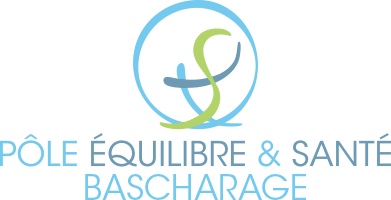Concept 2 Skierg

The Concept 2 Skierg is a training device designed to reproduce the movement of cross-country skiing, working all the muscles of the upper body and posterior muscular chain. Used in physiotherapy, it offers numerous benefits for patients in terms of rehabilitation and muscle strengthening.
Concept 2 Skierg presentation
Design and operation
The Concept 2 Skierg is an ergonomic, robust device that adapts to all levels of user. It consists of a vertical structure, wall-mounted or free-standing, and two handles connected to cables. The cables are connected to an air resistance system, enabling the intensity of effort to be adjusted to the patient’s needs.
Performance measurement
The Skierg is equipped with a PM5 performance monitor, which provides real-time data on distance covered, speed, time, calories burned and power output. The monitor can also be used to track patients’ progress and adapt exercises according to set objectives.
Adaptability
The Skierg adapts to the needs of each patient, thanks to the possibility of adjusting the height of the handles and the level of resistance. This makes it possible to work different muscle groups and personalize training to suit rehabilitation or muscle-strengthening objectives.
The benefits of Concept 2 Skierg in physiotherapy
Strengthening muscles
Skierg mainly involves the muscles of the upper body, notably the shoulders, arms, back, abdominals and pectorals. It also works the muscles of the posterior leg chain, particularly the glutes and hamstrings. This makes it ideal for strengthening weak or atrophied muscles and preventing injury.
Improved mobility and coordination
Pushing and pulling on the Skierg requires coordination between the arms and trunk, which helps improve joint mobility and synchronize movements. What’s more, the machine helps improve core stability and posture.
Cardiovascular rehabilitation
Skierg offers a non-impact cardiovascular workout, making it particularly suitable for patients with joint pain or functional limitations. It helps build endurance and respiratory capacity, contributing to better recovery after injury or surgery.
Injury prevention and recovery
The Skierg is the tool of choice for rehabilitation after injury, as it allows you to work gently and progressively. Physiotherapists can adapt exercises to suit the patient’s condition and recovery goals. In addition, Skierg can be used to prevent injury by strengthening stabilizing muscles and improving joint mobility.
Versatility and adaptability
The Skierg is a versatile machine suitable for a wide range of patients, whatever their age, fitness level or rehabilitation needs. It can be used alone or in conjunction with other exercises and treatments, offering a personalized solution for every patient.
Exercises and programs suggested by physiotherapists
Basic exercises
Physiotherapists can suggest several basic Skierg exercises, such as double poling (simultaneous movement of both arms), single poling (alternating arms) or diago (diagonal movement of the arms). These exercises allow you to work different muscle groups and develop coordination.
Advanced exercises
For more advanced patients or those with specific goals, physiotherapists can suggest more complex exercises, such as squat poling (adding squats during double poling) or poling with trunk rotation. These exercises place greater demands on the stabilizing muscles and help improve joint mobility.
Customized programs
Depending on each patient’s needs and objectives, physiotherapists can design training programs on the Skierg, combining different exercises and resistance levels. These programs can be adapted over time to monitor patients’ progress and help them achieve their rehabilitation or muscle-strengthening goals.
Conclusions
The Concept 2 Skierg is a valuable tool in physiotherapy, offering a multitude of benefits for patients undergoing rehabilitation or muscle strengthening. Thanks to its ergonomic design, performance measurement and versatility, the Skierg enables physiotherapists to offer exercises and programs tailored to each individual patient, contributing to better recovery and quality of life.

